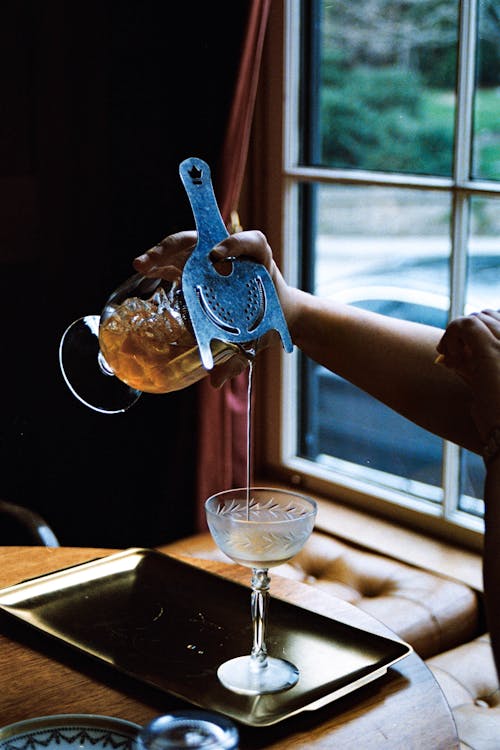
In 2024, the culture of alcohol consumption continues to evolve, shaped by societal changes, technological advancements, and shifting attitudes towards health and lifestyle. This article delves into the current landscape of alcohol consumption, exploring how traditions are blending with modern innovations, and what that means for both producers and consumers around the world.
A Look at Global Trends
As we explore the evolving patterns of alcohol consumption in 2024, it's crucial to consider the context provided by the broader dialogue on alcoholism, particularly within educational and advocacy settings. An essay on alcoholism typically underscores the health risks and social consequences associated with excessive drinking, providing a backdrop against which current trends can be assessed. The rising popularity of low-alcohol and alcohol-free beverages highlights a significant shift toward moderation and health consciousness. These alternatives not only cater to individuals cutting back on consumption due to health concerns but also reflect a societal move towards preventing alcoholism and promoting overall well-being. Moreover, with technology's role in marketing and accessibility of alcohol, there is an increased need for awareness and education to prevent misuse, ensuring that convenience does not lead to increased addiction rates. This juxtaposition of technology and health trends in the discourse of alcoholism shapes the global landscape of alcohol consumption, where prevention, education, and innovation intersect.
The Rise of Health-Conscious Drinking
One of the most significant trends in 2024 is the rise of health-conscious drinking. As more people become aware of the health implications associated with alcohol, there has been a noticeable shift towards low-alcohol and alcohol-free alternatives. These products cater not only to those looking to reduce their alcohol intake but also to a growing demographic that prioritizes health and wellness above traditional drinking motives.
The Influence of Technology on Consumption
Technology has revolutionized the way people buy, consume, and interact with alcohol. Mobile apps for on-demand delivery of alcoholic beverages have become the norm, and virtual tastings and augmented reality experiences are enhancing the way consumers engage with their favorite brands. This integration of technology is making alcohol consumption more personalized and convenient, appealing to a tech-savvy generation.
Cultural Shifts in Drinking
Changing Social Norms
Social norms around drinking are changing. In many parts of the world, binge drinking is on the decline, while social drinking has become more about the experience rather than the act of consuming alcohol itself. Pubs and bars are increasingly offering environments that focus on social interaction with activities and games, moving away from alcohol as the main attraction.
The Role of Craft and Artisanal Products
Craft and artisanal alcohol products continue to rise in popularity. Consumers are increasingly interested in the story behind their drinks, leading to a preference for locally sourced and uniquely crafted beverages. This trend is not only about taste but also about supporting local businesses and sustainability practices.
Regulatory and Economic Implications
Government Regulations
With the shifting culture, governments worldwide are reevaluating their alcohol policies. Regulations concerning advertising, consumption age, and drinking in public places are being adapted to better fit contemporary societal values and health guidelines.
Economic Impact
The alcohol industry remains a significant contributor to the global economy, but it faces new challenges and opportunities in 2024. The growth in artisanal and bespoke products has opened new markets, but it also comes with increased competition and the need for innovation in marketing and production practices.
Consumer Behavior and Preferences
The Influence of Social Media
Social media continues to play a pivotal role in shaping the culture of alcohol consumption. Influencers and social media platforms are powerful tools for marketing, with trends often driven by viral content. The visual appeal of beverages, such as craft cocktails and beautifully designed labels, has become as important as the quality of the drink itself.
The Shift Towards Personalization
Personalization is at the forefront of the alcohol consumption trend in 2024. Consumers are looking for products that reflect their personal tastes and values. This has led to an increase in customizable options, from bespoke labels to craft cocktails tailored to individual preferences.
The Future Outlook
Looking forward, the culture of alcohol consumption in 2024 suggests a blend of tradition and innovation. As health trends continue to influence drinking habits, and technology further integrates into consumer lifestyles, the alcohol industry is poised for significant evolution. Companies that can adapt to these changes while maintaining high standards of quality and ethics are likely to thrive.
Conclusion
The culture of alcohol consumption in 2024 is a fascinating reflection of broader societal shifts. With health consciousness on the rise, technology reshaping interactions, and a greater emphasis on quality and sustainability, the way people view and consume alcohol is fundamentally changing. As we continue to navigate these changes, the alcohol industry will undoubtedly continue to innovate and adapt, offering consumers around the globe new ways to enjoy its products responsibly and enjoyably.